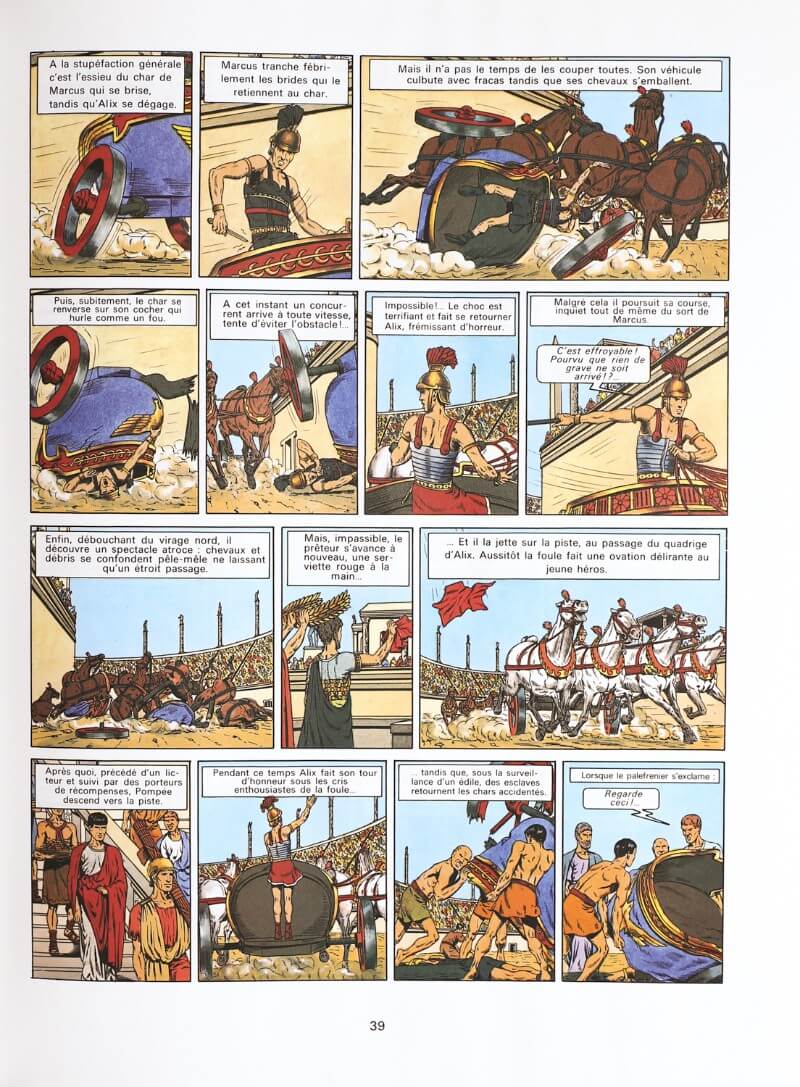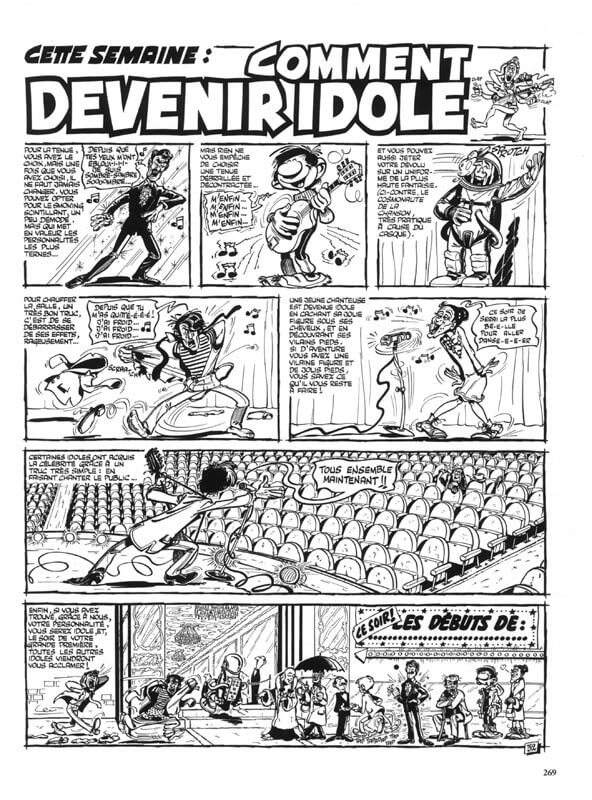Tintin
by Hergé
1929
A quick presentation of some of the most famous comics.
After World War Two, publishers launched periodicals addressed specifically to the youth. Thanks to their high frequency of release and the
rivalry they kept, it led to a climate favorable to creation, and some real artistic emulation. Today, we remember two main periodicals of
that time: Le Journal de Spirou and Le Journal de Tintin. We can also mention the magazine Pilote, that was
created a little later on by Uderzo, Goscinny and many others.
The franco-belges comics archieved major development during the 1950s and 1960s. At that time, Belgian and French authors and
illustrators worked together, and so the adjective franco-belge was used very naturally to point to the comics industry. Although
still active today, the franco-belges comics refers more to a format, as they generated more diversified and adult comics.
You can find below, randomly arranged, some of the most famous ambassadors of franco-belges comics. Which one is your favourite?

|
Tintin
Astérix
Published in the very first edition of the magazine Pilote, this successful serie shows the fight of a small Gallic village against the Roman empire, with strong character and magic potion , |

|

|
Gaston Lagaffe Published in Le Journal de Spirou, gaston has nothing of a hero and is certainly the laziest comic character. Although he makes many blunders, he is very inventive .
Achille Talon
|
 |

|
Blake et Mortimer
Lucky Luke
|

|
 |
Les Schtroumpfs Icons of the international pop culture, the Smurfs live in the forest. With their vibrant blue skin and smurfing way of talking, they are adored from a very young age, although they are all more than 100 years old. |

|
|
Alix, Alix is a young Gallic raised by Roman people. This situation will often lead him to be torned between his gallic roots and his roman citizenship. Friend with Caesar, he is renowned for his courage. Fearless and devoted to good causes, Alix was first published in Le Journal de Tintin. |

|
Dingodossiers This satire of the French society of the 1960s was published in Pilote. |
 |
Iznogoud
Marsupilami
|

|
Leave a Comment / Laissez un commentaire